Category: MultiChannel eCommerce
You might not think about packing materials every day, but how a product is packed can play a big part in a customer’s perception of a product’s quality. Just as packaging can mean the difference between a customer buying a product or not, if you ship orders, also consider how important your packing material is to your customers.
Here are four simple tips to keeping your packing options competitive:
- Make your packing materials interesting and entertaining to identify your brand. Packing materials also represent your business.
- Educate your customers – Use this as an opportunity to reach out to them. It exceeds their expectations and builds loyalty. It also encourages them to place more orders.
- Advertise your brand – Often, when a package is delivered in a plain, unmarked box or simple padded envelop, it’s a missed opportunity. An unmarked package, which travels across the country, could have been broadcasting the brand it carried all along the delivery route. Inserts and catalogs are great, but using packing materials to encourage your customers to place more orders is brilliance. There are many ideas, such as printing pictures of items you sell with taglines. Because of the expense, it might be worth discussing a cost-sharing arrangement with your vendors to purchase boxes printed with their logo. Likewise, vendors might consider printing boxes with their logos and making them available to their distributors.
- Reduce waste – People don’t usually want to be wasteful, and they’re willing to recycle. Whenever possible, use materials that are easy to reuse and recycle, and your customers will take care of the rest.
As you do for retail customers, give your business clients the same attention. Packing options must be flexible and customizable. Otherwise, you might not have the capability to sell merchandise that clients (or prospective clients) request. You’re not in business to miss out on opportunities, so be sure you have what you need to deliver.
 If your business has a physical presence, you already know to provide equal access to your facilities to include people with disabilities. But what about your eCommerce website? If it serves the public, now is a good time to evaluate it to make sure people with disabilities can access it as easily as those without disabilities. Designing your website with equal access to all shoppers is smart customer service and good for your business. It’s not difficult, and you don’t want to miss out on a large group of customers because they can’t access your website!
If your business has a physical presence, you already know to provide equal access to your facilities to include people with disabilities. But what about your eCommerce website? If it serves the public, now is a good time to evaluate it to make sure people with disabilities can access it as easily as those without disabilities. Designing your website with equal access to all shoppers is smart customer service and good for your business. It’s not difficult, and you don’t want to miss out on a large group of customers because they can’t access your website!
Here are four recommendations from the ADA website to address accessibility problems.
- Videos with sound are great for people who can hear your content but not see it. But what about people who can’t hear the sound in your videos? When you use multimedia, such as videos, include descriptions and captions. This allows people to see your message even if they can’t hear it.
- Consistency builds trust, and helps your brand be easily recognized. However, flexibility with colors and font settings is key to providing access to people who have difficulty seeing the fonts and color combinations you choose. To accommodate them, allow people to use their browsers and systems to specify the colors and font settings they need to see your content.
- PDF documents keep your intended format consistent and they are difficult to change. For these reasons, they are widely used for digital distribution. However, they don’t work well with screen readers, alternate colors, and alternate font settings. So, the content in PDF documents might not be accessible to everyone. If you use them on your website, also provide another format, such as HTML or a text-based format.
- As with PDF documents, images are not accessible by screen readers or Braille display devices. To make your images available to people with a vision disability, include descriptive text for each image so your shoppers know what you’re showing them.
The ADA website also provides examples, terms, and information to help understand why these steps are so necessary. While these are best practices intended for state and local governments, you can easily apply these to your website to be sure you reach the largest possible audience, and more people can benefit from your message.
To help you reach even more users, the Word Wide Web Consortium (W3C) has developed Web Content Accessibility Guidelines (WCAG) to assist developers with guidance and techniques. It provides 12 organized guidelines with test criteria, as well as related stories to help understand the reasons for each of them.
Contact us if you need help making your InOrder eCommerce website accessible to more customers, or for more information about using InOrder for your eCommerce business.
Mobile fraud is on the rise, and, as is the case with your eCommerce shopping website, your mobile eCommerce site requires vigilance to protect your customers’ sensitive data – especially when processing orders. Be sure you have measures in place to reduce mobile fraud, and train your employees to recognize signs of fraud. Your ERP system can also be a valuable weapon against would-be thieves and costly credit card chargebacks from fraud attempts.
Be sure you have these prevention measures in place to combat mobile fraud.
Fraud Scoring
To decrease fraudulent orders from being processed, use your ERP system to assess orders as they are received based on a variety of criteria known to indicate fraudulent purchases. This may include whether or not an item is considered risky, or even an area where orders are shipped. Simply knowing where fraud occurs can help protect your customers, so using address validation services is also helpful.
Integrated Solutions
Nobody wants to think that trusted partners are stealing from them – whether they’re shoppers, employees, or even vendors. But fraud and theft doesn’t only come from outside sources. Check your ERP system’s audit logging for dates, user names, and tasks each user performs. This enables you to isolate and trace other types of theft, such as generation of bogus customer refunds, gift cards, or credit memos.

Your ERP system’s Purchasing, Payables, and Inventory systems are all connected, so you can compare what was ordered – to what was received – to what you are paying your vendors.
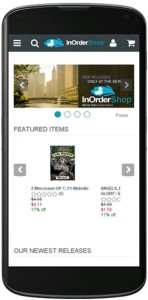 The best eCommerce systems use responsive design for mobile web using Google’s recommended responsive design pattern. With this design, a single cart functions for both PC and mobile, with a similar look and feel, regardless of device size, no longer requiring multiple web sites. What this means for fraud protection is that you don’t have to worry about carrying out the same protection measures on separate systems.
The best eCommerce systems use responsive design for mobile web using Google’s recommended responsive design pattern. With this design, a single cart functions for both PC and mobile, with a similar look and feel, regardless of device size, no longer requiring multiple web sites. What this means for fraud protection is that you don’t have to worry about carrying out the same protection measures on separate systems.
Training
Your employees play a significant part in protecting your business against fraud and theft. However, if they don’t know what to watch for, what to protect, or how, then how can they help you? One way is to follow your procedures. Define a security policy, tell your employees about it, and train them on it.
Stronger Security Measures
If you’re thinking about accepting credit card payments, you must make sure your system meets specific security standards to protect sensitive data. The PCI Security Standards website is a good place to start for information. If you currently accept credit card payments, you already know that your ERP system is PA-DSS-Validated to meet your PCI-DSS requirements.
When you protect against fraud and theft, your employees, vendors, and customers discover that they can trust you. With their trust comes respect and confidence that your business will continue to grow. Use these measures to improve and protect your customers’ shopping experience, achieve their trust, and prove that you take them seriously.
Contact us for a free demo of how InOrder’s eCommerce system helps combat eCommerce fraud and theft.
The InOrder Content Management Module enhances the eCommerce Module, allowing you to manage and regularly modify HTML content on your web site.
You can define “snippets” of HTML to easily create buttons and shortcuts for non-technical users to update and manage shopping cart content for inventory items sold on the web.
In addition, you can track, store, and display more information about each product on the Web, rename more field labels, and access an unlimited number of super-sized user-defined fields for inventory items and inventory hierarchy groups.
Following is a list of examples of how you can use the InOrder Content Management Module to easily control content on your web pages.
- Manage / regularly modify HTML content on your web site.
- Create and manage HTML shortcut buttons in the InOrder HTML Editor so non-technical users can update your website.
- Add a link to the website.
- Add formatting to text, such as bold or other styles and attributes, on your web pages.
- Easily embed dynamic images and videos on your web page.
- Create banners or content sections that appear on the website whenever you turn them on, and disappear when you turn them off through the InOrder interface.
- Manage content on your home page, static policy pages, product hierarchy or inventory page content through the InOrder interface.
- Create snippets of common HTML to edit inventory fields or your web pages.
Easily define the Snippet button and prompts.
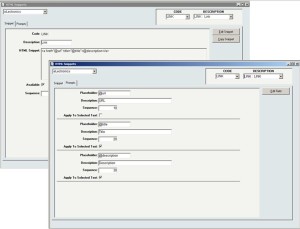
The HTML Snippet is available for inventory items.
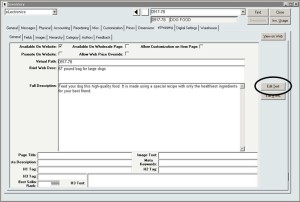
Add as many other buttons like this as you wish, there is no limit. You can even re-sequence them to put the important buttons at the top.
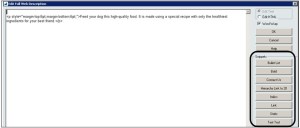
The Edit HTML option opens a window to edit HTML for a user-defined field.

When the snippet button is clicked, the prompts are displayed to the user, who provides the requested information.
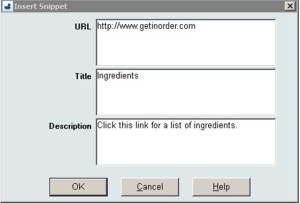
When the user completes the requested information, it is placed on the website for the inventory item.
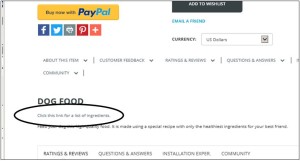
Contact us for a free demo of the InOrder Content Management Module.
Few people like change, but when something isn’t working as needed, it might have to go. This is true for cars, computers, phones, and even systems that drive your business. Shopping is just one step in the process of replacing a new eCommerce Platform. Once you find it, the real work begins. Here are 5 tips to help you stay focused for success.
- Identify your objectives and tasks, and assign a unique priority to each task. This helps to quickly identify which tasks must be completed before others, and which can wait until the next phase, if necessary. This is especially helpful if time is tight.
- Identify individuals responsible for each task, and assign those responsibilities to each of them. Identify deadlines for decisions and make clear the consequences of not meeting those deadlines. It’s also a good idea to assign one person to communicate between all parties involved, to avoid any misunderstanding or miscommunication between those indirectly involved and those directly involved in the project.
- Make a schedule for the project that includes each task you identified. Include time for unexpected work or delays. (Our white paper “Ten Tips for a Successful ERP Implementation” recommends 25%.) As the project moves along, monitor the progress of each item on the schedule. If anything is not completed on time, find out the reason for the delay, and make sure it is corrected so it can get back on target. If a new task is discovered during the project, assign it its own priority and adjust your schedule accordingly, or begin a new list for tasks that can wait until the next phase. Remember that you included time in your budget for unexpected work and delays, so use it if necessary, or add to it if an item is completed in less than the time originally scheduled. Regularly notify everyone involved of the progress.
- Focus on the objectives and reasons for the upgrade. As you make progress, it might be necessary to maintain a “punch list” of important items or requests that have been identified since the project began.
At this point, it might be appropriate to re-assign individuals and their responsibilities, as determined by your new list. Again, assign a priority and make a schedule for each item on the new list. Check the progress of each item, and update the list/schedule as appropriate. As with your first schedule, regularly notify everyone involved of the progress.
- Help your staff understand the benefits of the new system, both to them and to the company. Before implementation, give them time to accept the new system and become comfortable with it. Identify any new processes, new responsibilities, and questions about the new system. Document them, and train your staff. Make sure everyone involved knows the processes, their responsibilities in those processes, and how to accomplish them with the new system.
Change doesn’t have to be painful, especially when it’s needed to help improve your system. Keeping sight of priorities, staying organized, and clear communication are key elements for successfully growing your business.
Contact us for a free demo to see how InOrder’s eCommerce platform can help your business.
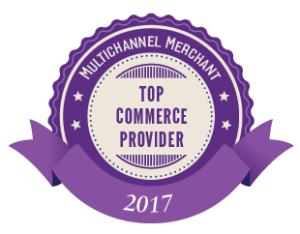 We are proud to announce that we have been named a Multichannel Merchant Top Commerce Platform for 2017, part of a list of leading commerce platform providers selected by the editors of Multichannel Merchant. With this listing, users can see InOrder’s featured capabilities, ideal client types, equipment and systems, contact information, and more.
We are proud to announce that we have been named a Multichannel Merchant Top Commerce Platform for 2017, part of a list of leading commerce platform providers selected by the editors of Multichannel Merchant. With this listing, users can see InOrder’s featured capabilities, ideal client types, equipment and systems, contact information, and more.
To see what makes InOrder so special, call us at 888- 667-7332 for a free demo.
Shoppers want to know what they’re buying before they buy it. They want to know if they’ll like a product, how it works, and what others think about it. They also want to know about you.
Embrace your Comparison Shoppers
It is important to know what your customers think of your products because then you know how you can improve your offerings, and where you should consider raising or lowering prices. Additionally, reviews can increase sales by steering and bolstering confidence as new shoppers are considering a making a purchase.
InOrder lets you review the reviews, edit them when necessary while saving the original, but most importantly, it gives you a chance to discuss and resolve problems with customers who might not otherwise come back next time due to a misunderstanding or a solvable problem. It also lets your reps see a customer’s past reviews and thank the customer, or use their feedback to help make new recommendations.
Regardless of these conveniences, it is vital to keep customers engaged after a sale because then they are more likely to remember your website the next time they are ready to make their next purchase. A perfect way to seal this deal with busy customers is to send an email that offers a small compensation, such as a $5 coupon for customers who submit their first follow-up review to your site. The coupon code can simply be a key code linked to a promotion that allows one-time customer use. InOrder will only allow a discount up to the amount of the purchase.
Packing materials are not things you think about every day. But if you ship orders, you have to consider how important they are to your customers. You have to think about boxes, padding, packing tape, and other supplies to take your merchandise safely to your customers. You need to make sure your packing materials keep your merchandise clean and protect it from damage that may occur from the environment outside the box. Packing is serious business when you ship orders, and it can considerably add to the cost of the merchandise.
One concept to consider in packing materials is advertising. Inserts and catal ogs are great, but using packing materials to encourage your customers to place more orders is brilliance. There are many ideas, such as printing pictures of items you sell with taglines. Because of the expense, it might be worth discussing a cost-sharing arrangement with your vendors to purchase boxes printed with their logo. Likewise, vendors might consider printing boxes with their logos and making them available to their distributors.
ogs are great, but using packing materials to encourage your customers to place more orders is brilliance. There are many ideas, such as printing pictures of items you sell with taglines. Because of the expense, it might be worth discussing a cost-sharing arrangement with your vendors to purchase boxes printed with their logo. Likewise, vendors might consider printing boxes with their logos and making them available to their distributors.
Often, when I get a package delivered in a plain, unmarked box or simple padded envelope, I see missed opportunities. That unmarked box, which traveled from who-knows-where, could have been broadcasting the brands it carried all along the delivery route. Sometimes, though, when I get a package delivered, I see evidence of a smart business that took advantage of a great opportunity!
The nature of the beast, when it comes to multi-channel distribution services, is an environment that has grown to be out of necessity. It all started with a shipping manifest system. The warehouse grew, and we needed to manage this new warehouse, so we brought in a WMS, which, by the way, had some great features we needed for building our kits. We needed to handle more calls, so the order management system was brought in for consumer direct orders, and then a contact management system for the B2B sales people’s orders. This was so successful for the business overall, but the accounting was becoming a nightmare, so the Accounting people put in some systems they knew already, for receivables and payables, payroll, and oh, a commission system for sales.
Then emails became a thing, so the growing IT Department acquired a customer service email system for that, and eventually found a vendor to do their email marketing. Finally, the Internet happened, so now we keep our inventory on a web store too. Half our customers and orders are coming from there, and going to different places.
When the websites took off, the Purchasing Department had its own PO system brought in, but then they grew and added some hosted forecasting software to use with the Marketing people, who also have a library of spreadsheets and apps for promotion analysis, key code tracking, web specials, and even a cross-sell/up-sell system.
What just happened? Now each of these systems has its own “experts” that the company relies heavily on, but anyone else (especially management) who does not use one particular system every day feels like they are in a foreign country if they need to access it instead of their own department’s system. Management across the board needs to have information from the other systems, so naturally they protect their own data that they have access to. This is their hostage, to use in the daily political negotiations to trade for the data they need from everyone else. Silos of data, built tall throughout the organization, can be a dangerous thing.
I.T. may step in to help with this problem by (guess what?) setting up another system, called a “data warehouse.” A system to sit on top of all the other systems, and pull data from them into one place. (Yes, unfortunately more data feeds, but for the greater good, right?) So eighteen systems now. Much to the dismay of the Accounting department, the numbers never seem to match across systems, but Marketing usually does not mind.
To make matters worse, the eighteen systems we listed above all have monthly or annual maintenance costs, occasional required upgrades just to keep them working properly on the latest version of Windows or with each other, and these crazy “feeds of data” going back and forth all over the place. The I.T. Department is always trying to keep these feeds going successfully, some as if they were donkeys going up a steep mountain trail. Worse yet is when data needs to be entered or regularly corrected in two or more places manually, such as the WMS and the Website.
Is there a better way? What if we combined some of these systems into one “enterprise wide” system (and maybe two or three add-ons)? In most cases, the argument made by the individual departments, for this type of environment, (cherishingly referred to as “best of breed”) is that each system has some compelling feature that we cannot live without (like the WMS’s kitting feature). Features we would lose if we paired down to a single system across several departments. This is rarely true. In most cases, the combined system either already has the feature (if you dig deep enough) or the feature can be added to an enterprise system. But ask yourself, if this compelling feature was reviewed by upper management, could it be deemed a “sacred cow”, which no longer “aligns with the overall goals of our organization?”
Another argument that could be made against having a single system is that we would be putting too many eggs into one basket. If the single system goes down, would the entire organization be stuck? Anyone familiar with the Theory of Constraints understands that any of these systems could be causing a bottleneck. As it turns out, keeping eighteen systems up and running is eighteen times harder than keeping one system up and running. It also turns out that enterprise level systems are built to be more disaster-proof because they know from the ground up how much more they are relied on.
A true enterprise distribution system breaks down the silos of hostage data, requires less overall maintenance costs and resources, and most importantly, it gives management direct access to a clearer, more accurate picture of what is happening at any point in time across all departments, vital for best informed management decision making.
















